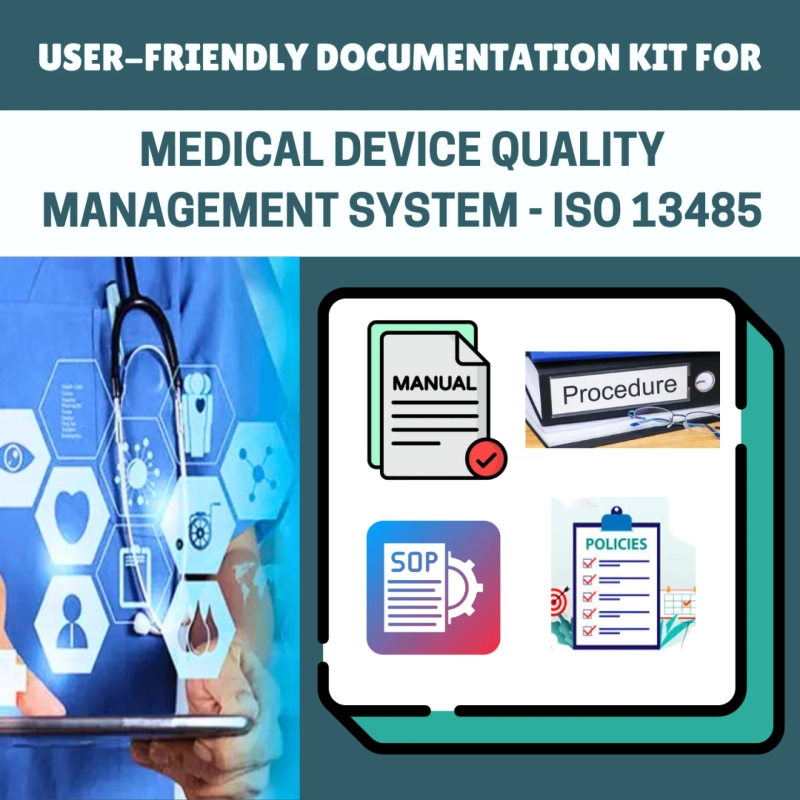ISO 13485 is a globally recognized standard for medical device quality management systems (QMS). It sets requirements for organizations involved in the design, production, installation, and servicing of medical devices. One of the most crucial aspects of ISO 13485 compliance is proper documentation. These documents serve as evidence of conformity, demonstrate control over processes, and support regulatory requirements. However, many organizations encounter challenges when preparing ISO 13485 documents. Mistakes in documentation not only slow down certification but also increase the risk of nonconformities during audits.
This article explores the most common mistakes in preparing ISO 13485 documentation and how organizations can avoid them.
1. Overcomplicating the Documentation
A frequent mistake is creating documents that are excessively detailed, complex, or filled with unnecessary information. While ISO 13485 requires comprehensive documentation, it does not demand long or overly technical procedures that confuse employees. Overly complex documents make it difficult for staff to follow processes, leading to inconsistencies in practice.
How to avoid: Keep documents clear, concise, and user-friendly. Use simple language, flowcharts, and checklists to make them easy to understand.
2. Failing to Identify Mandatory Documents
Organizations sometimes overlook required documents such as the Quality Manual, procedures for control of documents, risk management files, or medical device files. Missing mandatory ISO 13485 documents can result in serious nonconformities during certification audits.
How to avoid: Maintain a checklist of mandatory editable ISO 13485 documents and cross-reference it with standard clauses to ensure completeness.
3. Copying Generic Templates Without Customization
Another mistake is relying too heavily on generic templates found online or provided by consultants. While templates can be useful, failing to adapt them to the organization’s actual processes results in documentation that does not reflect real operations. Auditors quickly identify this gap, and it undermines the effectiveness of the QMS.
How to avoid: Customize all ISO 13485 documents to reflect your company’s unique structure, processes, and risks.
4. Poor Control of Documents and Records
ISO 13485 requires strict control over documents to ensure only the latest versions are in use. Many companies struggle with version control, leading to employees working with outdated procedures or forms. Similarly, records may not be properly identified, stored, or protected.
How to avoid: Implement a strong document control procedure with version tracking, approval workflows, and clear retention rules. Digital document management systems can be highly effective.
5. Incomplete Risk Management Documentation
Risk management is central to ISO 13485, and failing to document risk analysis, mitigation actions, and residual risk evaluations is a common issue. Some organizations either skip risk documentation entirely or only partially complete it.
How to avoid: Integrate risk management documentation into every stage of product development and ensure it is updated throughout the device lifecycle.
6. Neglecting Training and Competency Records
ISO 13485 emphasizes competence of personnel involved in quality-critical processes. A common mistake is failing to maintain training records that demonstrate employees are qualified to perform their roles. This results in gaps during audits.
How to avoid: Keep detailed records of training, qualifications, and competency assessments for all relevant staff.
7. Inconsistent Use of Documented Procedures
Organizations often prepare procedures but fail to ensure that employees consistently follow them. This creates a disconnect between documented processes and actual practices, which auditors view as a serious nonconformity.
How to avoid: Train employees on documented procedures, conduct internal audits to verify compliance, and update documents as processes evolve.
8. Failure to Update Documents Regularly
ISO 13485 is not a one-time activity; documents must reflect current practices, regulatory updates, and organizational changes. Outdated documentation leads to confusion and nonconformance.
How to avoid: Establish a schedule for document review and revision. Assign responsibility to quality personnel to ensure documents are regularly updated.
9. Ignoring Regulatory Alignment
ISO 13485 is designed to align with regulatory frameworks. A mistake organization make is preparing ISO 13485 documents in isolation, without considering overlapping regulatory needs. This creates duplication of effort and compliance gaps.
How to avoid: Map ISO 13485 documentation requirements with applicable regulations to ensure full alignment and efficiency.
10. Underestimating the Importance of Records as Evidence
While procedures and manuals are often prioritized, some organizations neglect the importance of records. Records serve as proof that processes are implemented effectively. Missing calibration records, CAPA records, or audit reports can weaken compliance.
How to avoid: Treat records as vital evidence. Ensure all required records are maintained, organized, and easily retrievable.
Conclusion
Preparing ISO 13485 documents is not just about satisfying certification auditors; it is about building a robust system that ensures medical device quality and patient safety. The most common mistakes—such as overcomplicating documents, failing to identify mandatory requirements, neglecting risk management, or ignoring updates—can be avoided with a structured approach. By simplifying documentation, ensuring completeness, and aligning with both organizational practices and regulatory requirements, companies can create ISO 13485 documents that truly support compliance and continuous improvement.



